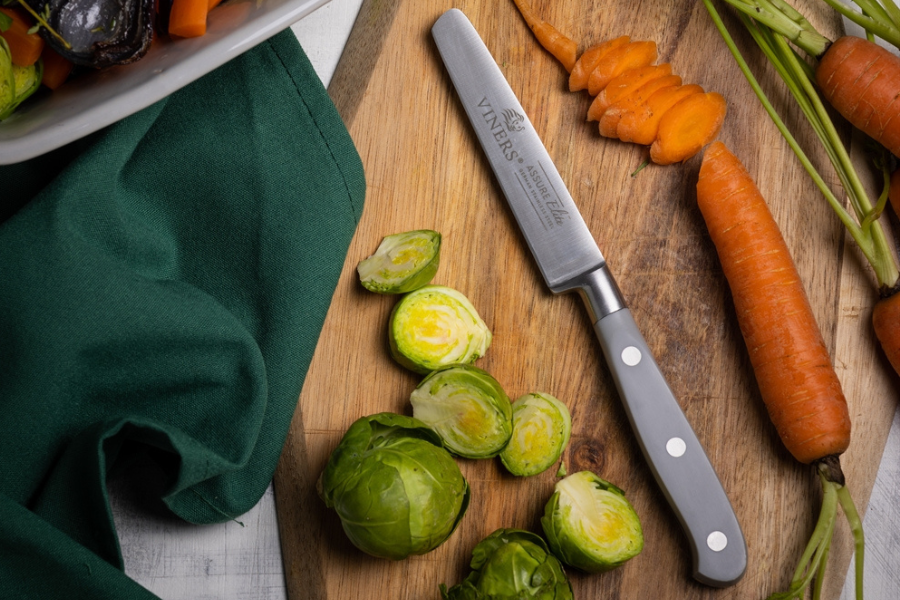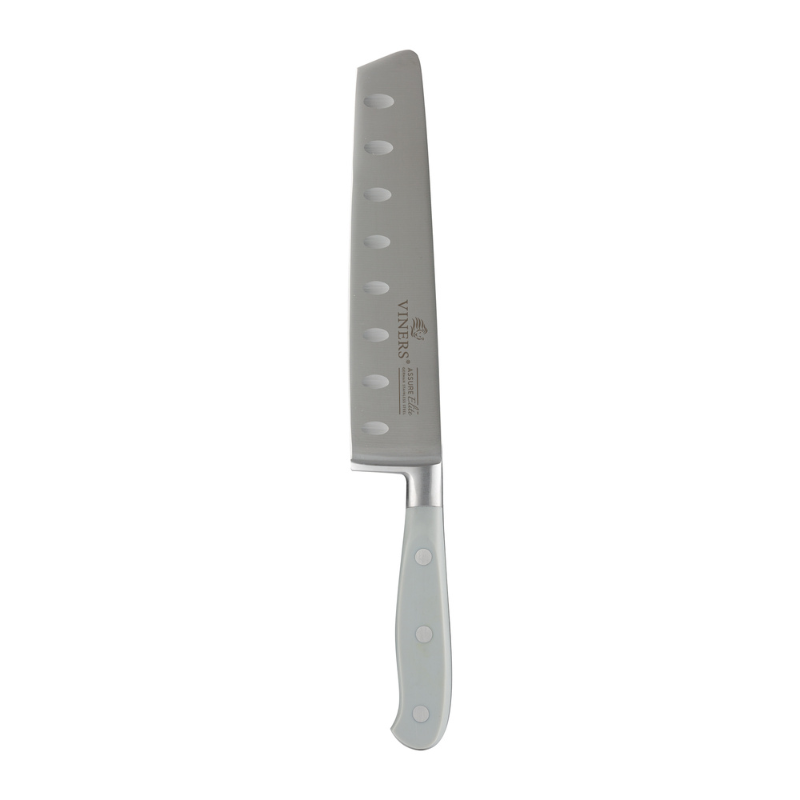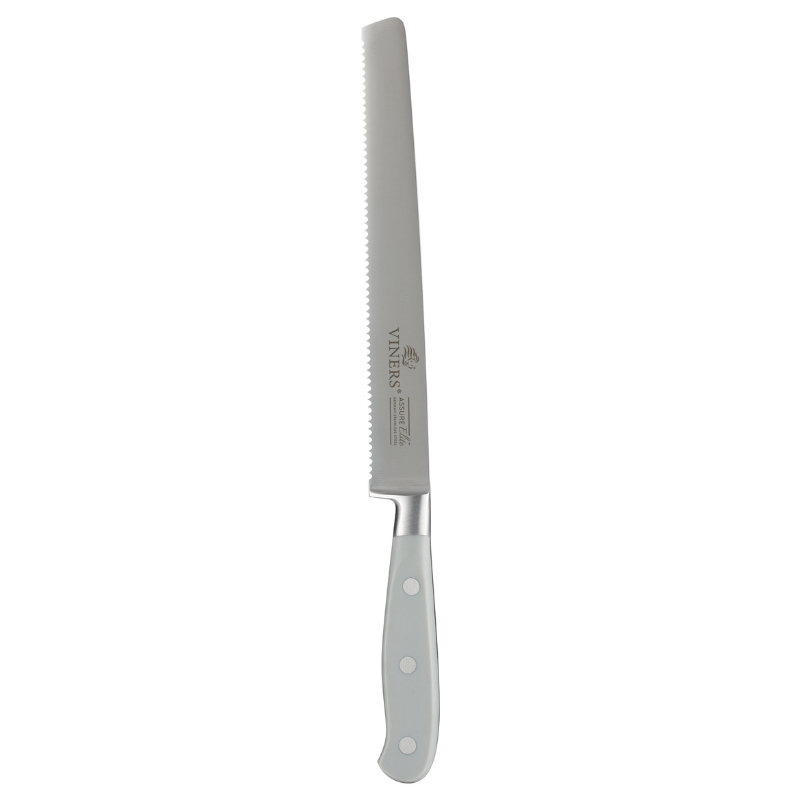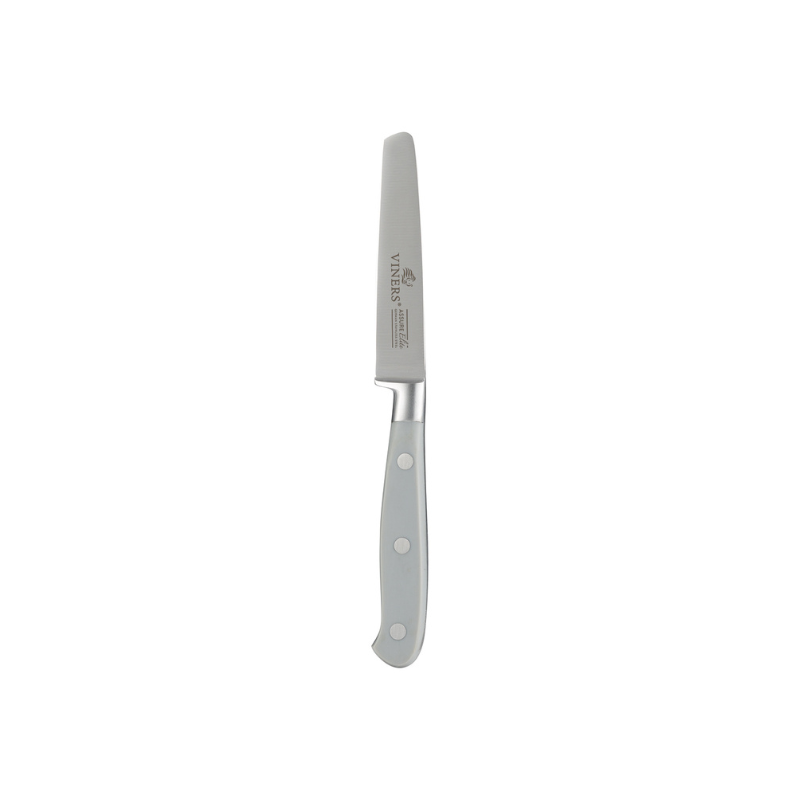Different Types of Knives
Here at Viners®, we offer a wide range of knife types purposely designed for everyday food preparations and functionality.
Our collections are suitable for cooks of all abilities, whether you’re buying your first set, you’re adding to your existing collection, or you want to gift someone special a beautiful knife block.
Within our collections, you’ll find specialised safety knives that feature a squared tip to prevent injuries, knife block and board sets, steak knives and more.


The Different Types of Knives
With so many knives on the market, knowing which ones to buy for everyday use can be confusing. So we've put together a list below of what knives are worth having in your collection for daily use and what they're used for.
What is a Chef's Knife?
A Chef’s Knife is one of the most versatile knives to have in the kitchen. Its curved blade allows for rocking back and forth on a chopping board, making dicing lots of vegetables at once an easy task. Its widest point is across the heel of the knife; this allows the user to apply more pressure when cutting larger, dense foods like potatoes or butternut squash.


What is a Santoku Knife?
A Santoku Knife is handy to have in your kitchen as it’s an all-purpose knife that’s well balanced. You may notice dimples on the sides of the blades; this is designed to stop delicate foods like thinly sliced raw fish from sticking to the metal. This useful knife isn’t just for cutting fish though, it’s also great for cutting vegetables and other types of meat. Its long, broad blade can also be used to scoop up chopped food and transport it.


What is a Bread Knife?
Bread knives are long blades with teeth along the surface, allowing the user to cut bread delicately and easily. While designed for cutting bread products, these serrated knives make short work of other foods with hard outer surfaces but a softer middle. Bread knives won’t squish down your food as you only apply light pressure, and the crust can be sliced through without any tearing.


What is a Paring Knife?
A Paring Knife is similar to a Chef’s Knife, but the length of the blade is shorter. It’s versatile like a Chef’s Knife, but its primary function is to peel the outer layer of fruits and vegetables. Its shorter, smaller blade allows for maximum manoeuvrability, so coring an apple and peeling the skin off tomatoes will be an easy task to do. The paring knife isn’t just limited to fruits and vegetables; it’s great for removing the skin from sausages, and deveining shrimp, too, as the knife’s head has a sharp, speared tip.


What is a Utility Knife?
A Utility Knife is a handy go-to knife for an everyday chef. Its blade is longer than a Paring Knife and thinner than a Chef’s Knife. It’s great for chopping up smaller fruits and vegetables like shallots and oranges. If something is too small to chop with a Chef’s Knife, reach for a Utility Knife instead, as it allows for more precise cutting.


Which knife is right for you?
Using the right knife when preparing food can make all the difference, particularly with cooking difficult or delicate meals. Depending on the type of food being prepared, the correct knife can make cooking easier, faster and most importantly, safer.
Meat
For raw meat like chicken, using a Chef’s Knife will be the best option. Its weighted and wide blade will easily break a whole chicken apart. Its length also makes it easier to slice large chicken breasts and thighs or dice them up to be fried. For cooked meat like turkey, beef or lamb, a Carving Knife is best for getting those thin, neat slices of meat.
Fish
A Santoku Knife is useful for preparing raw fish and sushi, as its dimpled blade stops thinly sliced fish from sticking to the metal. To devein shrimp and prawns, a paring knife is the one to reach for as it has a sharp, pointed head and a short blade. It’s an excellent knife for precision.
Vegetables
A Chef’s Knife, Paring Knife and Utility Knife are all great tools for cutting vegetables; it just depends on the ingredients and size. For larger vegetables like butternut squash and aubergine, you’ll want to grab a Chef’s Knife as its long blade will cut through the length of these vegetables with ease, whereas the Paring and Utility Knife would find it difficult to cut in one motion.
Fruit & Salad
For fruit like oranges, apples, and strawberries, it’s recommended to use a Paring Knife as it has a sharp, pointed head – making it ideal for peeling, coring and cutting certain fruits. Bigger fruits like melons and pineapples need more force to cut through, so you’ll need a Chef’s Knife for this. Its wide heel allows the user to apply a lot of pressure when cutting larger fruits.
Bread
A Bread Knife is the perfect knife to use when cutting through loaves, baguettes, rolls and any other foods with a hard surface and a softer middle. The length of a bread knife is great for cutting large loaves into even, perfect slices.
Dairy
A Chef’s Knife is great for pre-cutting cheese into slices, triangles or cubes for your cheese spread. If your cheese has inedible rinds, it’s best to remove them with a Chef’s Knife prior to their arrival so you don’t have to cut around it later on. A Pronged Cheese Knife is a multipurpose knife that can cut a piece of soft cheese with a sharp blade and then pick it up with the “V” pronged tip for serving. A hard cheese knife features a heavy, sturdy, and sharp blade that slices through the harder cheeses with ease. The cheese slicing knife is used to cut semi-hard and hard cheeses to create thin, even slices.
Looking after your knife
If you’ve invested in a quality kitchen knife set, then you’ll need to know how to properly look after your knives. Luckily, knife care and use are relatively straightforward due to the resilient materials they are made from.
Over time your knives will eventually start to dull with regular use. This is where sharpening regularly can come in handy in making food preparation consistently easier; just be sure to avoid electric or ceramic wheel knife sharpeners. Also, consider your choice of chopping board, opting for wood or plastic over metal or harder surfaces.
Finally, washing and storage can also impact the quality of knives over time. Therefore it’s good to get into the habit of hand washing, individually drying and safely storing all knives in the kitchen. Watch our video below on how we clean our knives.

